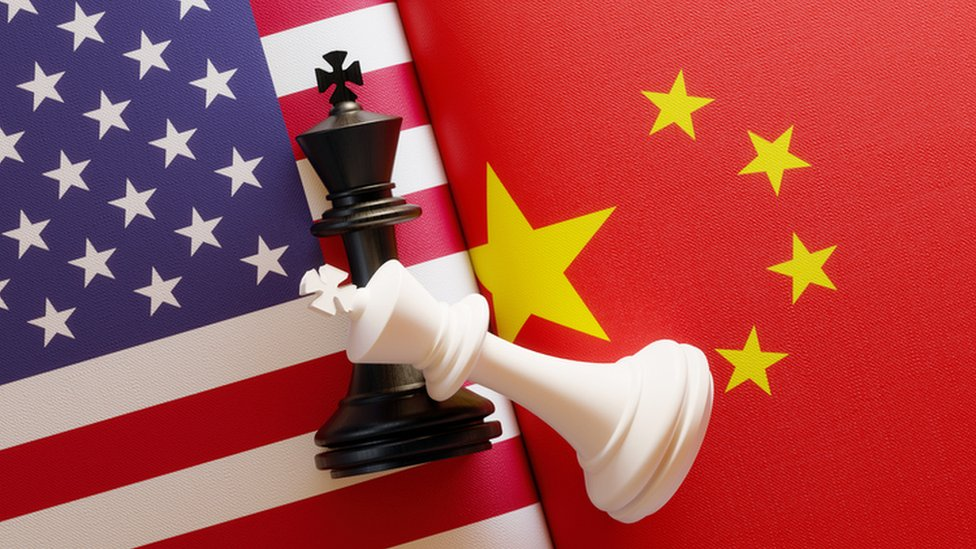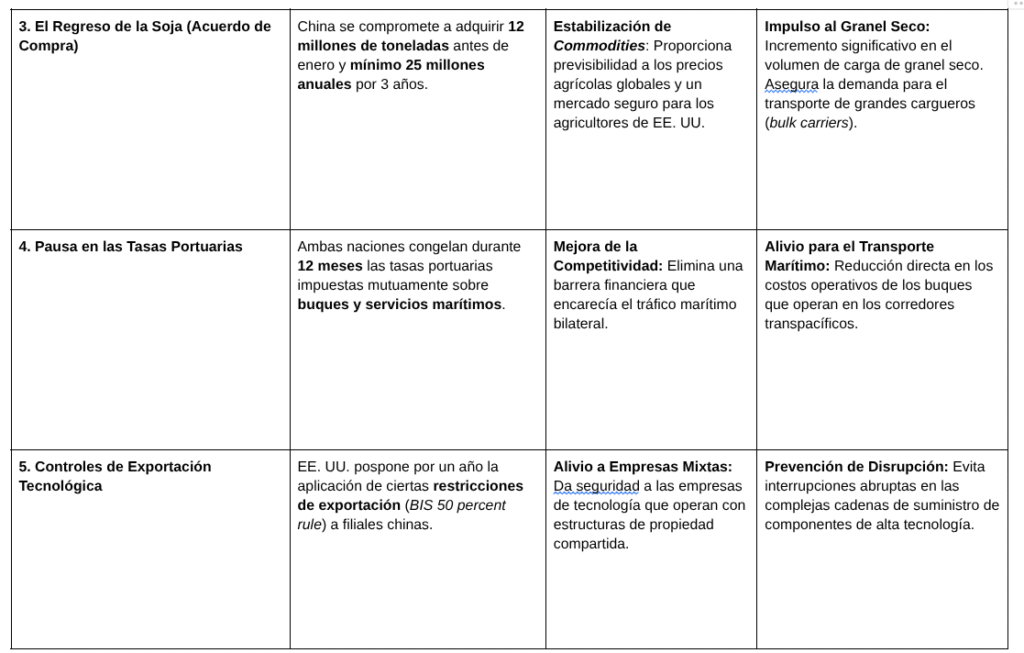
Trade geopolitics has been rocked this week by a crucial meeting: President Donald Trump's face-to-face meeting with Chinese President Xi Jinping in Busan (South Korea).
El resultado es una tregua comercial de un año que inyecta una dosis de alivio, aunque provisional, a las fracturadas cadenas de suministro globales.
Este pacto va más allá de la simple reducción arancelaria; es una negociación de alto riesgo que toca desde la seguridad nacional hasta la logística marítima.
La clave del acuerdo radica en desactivar los puntos de fricción más volátiles a cambio de compromisos concretos.
Trade Relief: Tariffs, Rare Earths and Soybeans
The consensus reached focuses on three areas that had been the main sources of conflict:
- Suspension of “Geopolitical” Tariffs: With a tariff reduction from 20% to 10% on Chinese products linked to fentanyl trafficking. Most importantly, both countries have agreed to suspend for one year the entry into force of new reciprocal tariffs. This prevents further escalation, giving importers and consumers some breathing space.
- The Rare Earths Armistice: China has agreed to suspend export control restrictions on rare earths and other strategic materials for one year. This is perhaps the point of greatest impact on the global supply chain, given China's dominance in these essential minerals for advanced technology (batteries, electronics, defence). So this agreement reduces the risk of price shock and shortages.
- The Return of Soybeans: In a crucial gesture for Trump's electoral base, China will immediately resume purchases of US soybeans, with a commitment to buy 12 million tonnes by January and a minimum of 25 million tonnes annually for the next three years. This stabilises agricultural markets and provides predictability for dry bulk shipping.
Impact on Trade: Logistics Breathes
The agreement also offers direct relief to international logistics and maritime transport, mainly in two respects:
- Pause on Port Fees: Both nations have agreed to freeze for 12 months the port fees they had imposed on each other's ships and maritime services. This measure directly alleviates shipping costs and reduces friction in major trans-Pacific corridors.
- Technology Export Controls: The US has postponed for one year the application of certain export restrictions (such as the BIS 50 percent rule) on Chinese subsidiaries. This reduces uncertainty for technology companies that rely on complex supply chains that cross both countries.
In short, while the agreement is provisional, it represents one of the most significant moves so far this year to stabilise trade routes and global supply chains.


For more information, you can read the following official news:

Sin duda un respiro , pero no más que eso . Además, preocupa esta “nueva forma “ de acuerdos internacionales, totalmente ajenos a la práctica habitual ( OMC). Aún así , bienvenido sea